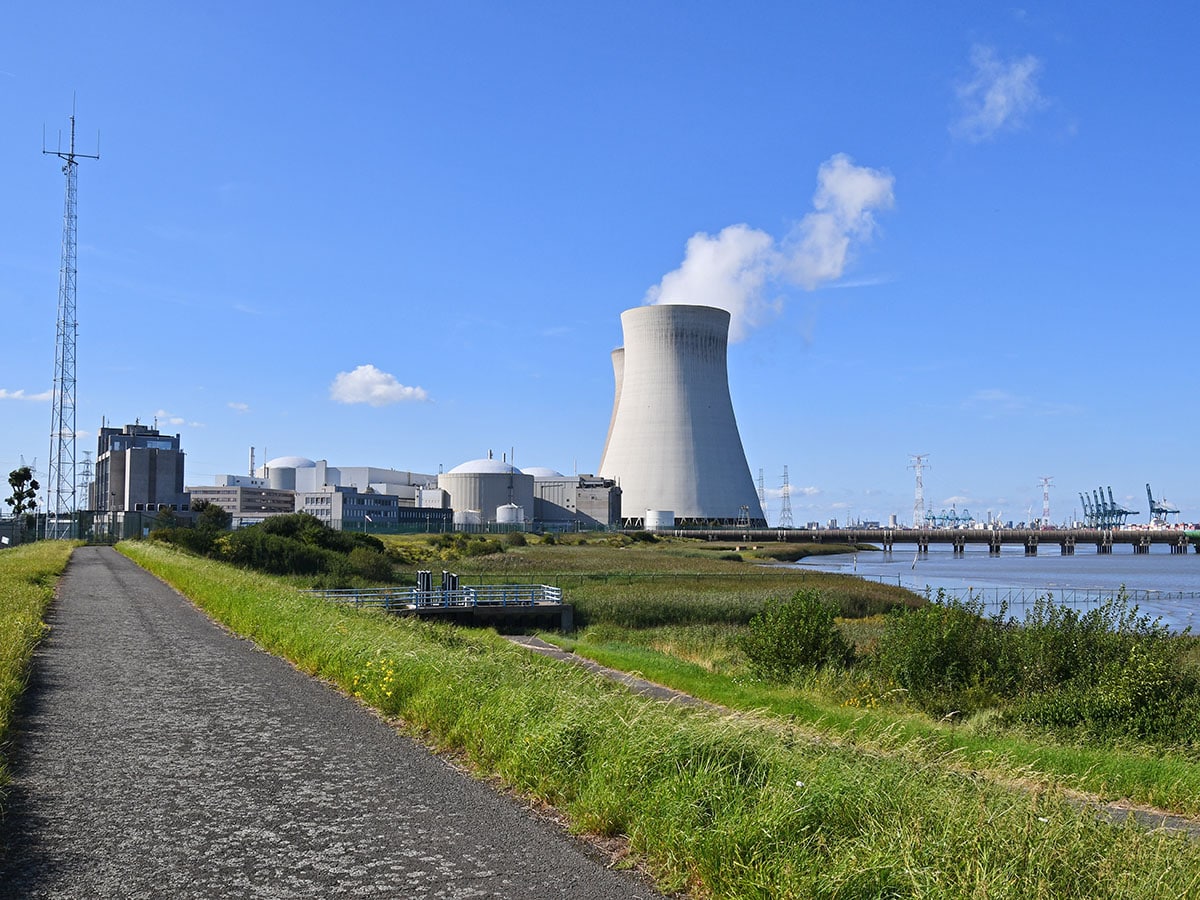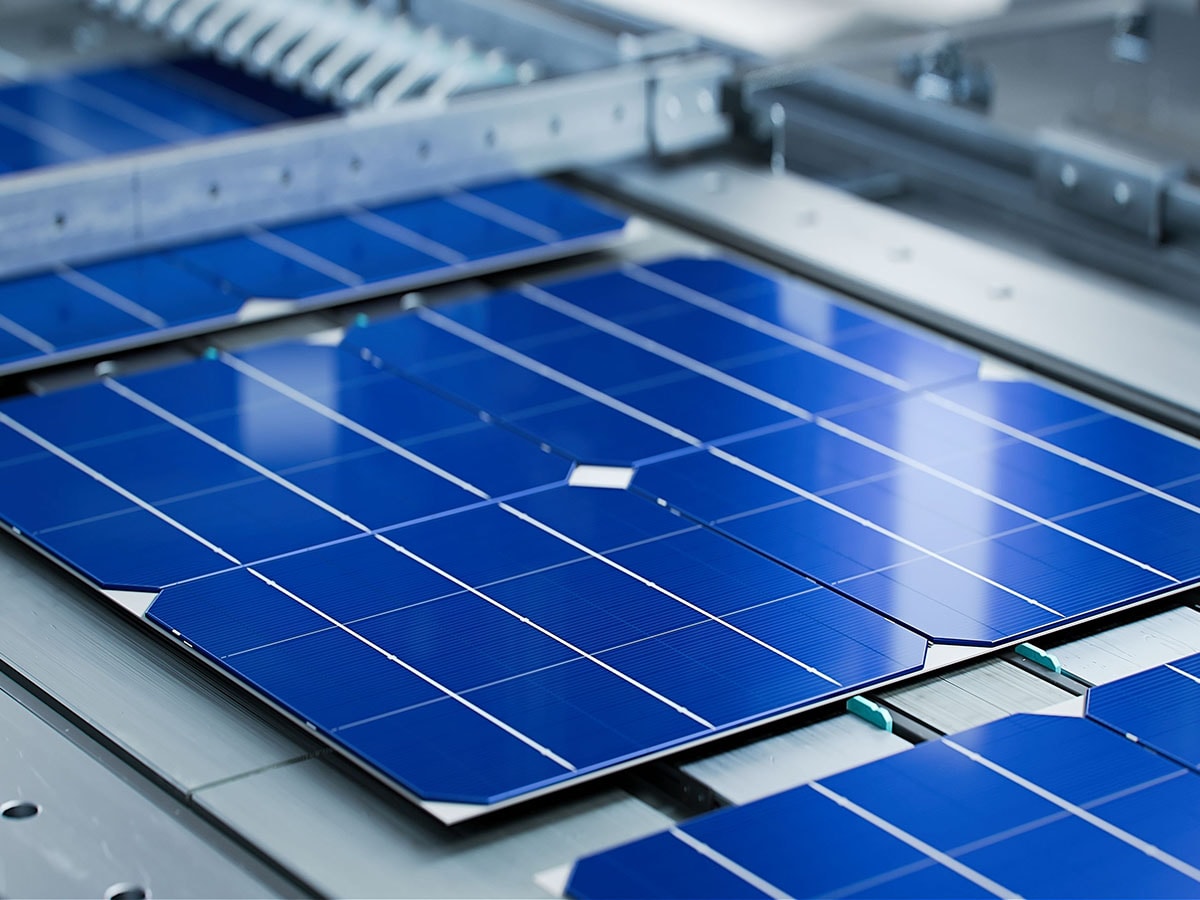 As of December 2024, data by the Ministry of Power, nuclear occupies 1.8 percent, or 8,180 MW, of the total non-fossil fuel capacity of 2,17,625 MW (217.62 GW). Image: Shutterstock
As of December 2024, data by the Ministry of Power, nuclear occupies 1.8 percent, or 8,180 MW, of the total non-fossil fuel capacity of 2,17,625 MW (217.62 GW). Image: Shutterstock
Enabling private sector involvement in nuclear energy has been in the works for some time now. The pathway was further formalised with Finance Minister Nirmala Sitharaman announcing in the Union Budget speech on February 1 that the government will take up amendments to the Atomic Energy Act, 1962, and the Civil Liability for Nuclear Damage (CLND) Act, 2010. “Development of at least 100 GW of nuclear energy by 2047 is essential for our energy transition efforts,” she said. Further, she announced a Nuclear Energy Mission for research and development of small, modular reactors (SMRs), with an outlay of Rs 20,000 crore, and said that at least five indigenously developed SMRs will be operationalised by 2033.
This builds on the announcement she made in her July 2024 Budget speech, where she had stressed on the emergence of nuclear power as a significant part of India’s energy mix, and proposed partnerships with the private sector towards research and development of newer technologies for nuclear energy, and setting up of small reactors. As of December 2024, data by the Ministry of Power, nuclear occupies 1.8 percent, or 8,180 MW, of the total non-fossil fuel capacity of 2,17,625 MW (217.62 GW). The government wants to increase India’s non-fossil fuel capacity to 500 GW by 2030 as part of its energy transition targets. Coal-led fossil fuels still occupy 53 percent of India’s energy mix. The Economic Survey released on January 2025 also cautioned against shutting down thermal energy without adequate alternatives for stable energy supply.
Nuclear power could hold the key to India’s energy independence amid global volatility due to factors like the Russia-Ukraine war and fluctuating oil prices. It could also contribute towards mitigating carbon dioxide emissions, which is critical given that India is the third-largest emitter of carbon dioxide in the world after the US and China, and has pledged to reduce its carbon intensity by 45 percent from 2005 levels by 2030. “Nuclear power, which is clean and essential for base load, is key to India’s energy transition from fossil fuel. Very crucial reforms to immediately focus on SMRs and amend laws to expand investments from the private sector and the liability cap will go a long way to achieve the target of 100 GW by 2047,” says Debasish Mishra, partner and chief growth officer, Deloitte South Asia.
Also read: FM’s balancing act: Consumption boost and fiscal prudence
In February 2024, Reuters had reported that the government is targeting approximately $26 billion in private nuclear power investments, and is in talks with leading power companies. Historically, the nuclear power sector has been dominated by state-owned entities, primarily the Nuclear Power Corporation. In January this year, the government, for the first time, formally invited private investments.
The participation of the private sector can lead to substantial investments and technological innovation in nuclear energy, says Nitin Gupta, co-founder and CEO of clean tech company Attero. “By focussing on SMRs, India can modernise its nuclear energy infrastructure, creating a reliable and low-carbon energy supply to complement renewable sources,” he explains. “The private sector’s involvement will drive efficiency and accelerate the adoption of advanced technologies, ensuring that India can meet its energy needs while reducing its carbon footprint. However, challenges remain in navigating the complex regulatory ecosystem.”
The Budget also announced incentives for electricity distribution reforms and augmentation of intra-state transmission capacity by states to improve the financial health and capacity of electricity companies. The announcement included an additional 0.5 percent GSDP borrowing allowance linked to undertaking distribution and interstate transmission reforms.
Clean Energy and Climate Resilience
Sitharaman announced a National Manufacturing Mission that will extend to clean tech manufacturing “to improve domestic value addition and build our ecosystem for solar photovoltaic (PV) cells, EV batteries, motors and controllers, electrolysers, wind turbines, very high voltage transmission equipment and grid-scale batteries”, she said.
 Image: Shutterstock
Image: Shutterstock
In India, solar energy generation is expected to have a compound annual growth rate (CAGR) of 28.6 percent, increasing from 116 billion units in 2024 to 317.4 billion units in 2028. The solar PV value chain goes from making polysilicon to ingots to wafers to cells, and then the finished modules/panels. For many years, Indian manufacturers had been focusing on the downstream part of this value chain, which includes importing solar cells and assembling them into modules or panels.
The opportunities to leverage the power of the sun have opened up due to the rapid cost decrease of solar PV modules and systems, but it remains a capital-intensive business, with large upfront expenditures, while returns could take time to materialise. The Budget announcement to spur local manufacturing of solar PV cells could be a step towards making the domestic value chain more efficient and cost-effective.
Also read: Budget 2025 expectations in a protectionist world
“A key highlight is the focus on clean tech supply chains, with a manufacturing mission for building domestic ecosystems for all critical clean technologies, including transmission equipment,” says Anvesha Thakker, partner, business consulting and national lead for clean energy, KPMG in India. “Duty exemptions for essential minerals like cobalt powder, lithium-ion battery scrap, and lead, alongside capital goods exemptions for 35 additional EV battery components, will strengthen domestic value chains.”
Under the purview of urban sector reforms, the government announced an Urban Challenge Fund of Rs 1 lakh crore to implement proposals for cities as growth hubs, creative redevelopment of cities and water and sanitation. An allocation of Rs 10,000 crore has been proposed for 2025-26. Jaya Dhindaw, executive programme director, Sustainable Cities at the World Resources Institute (WRI), says that while the Budget acknowledges the need for inclusive development and economic growth, there is a “missed opportunity in prioritising investments that safeguard people and infrastructure from the escalating risks of climate change”.
However, she adds, initiatives such as the Urban Challenge Fund, designed to position cities as growth hubs, and the support for states to develop infrastructure pipelines, present an opportunity. “Embedding climate resilience as a prerequisite for accessing these funds, through measures like blue-green and hybrid infrastructure can ensure that urban development is both sustainable and future-ready,” says Dhindaw, who is also the director of the WRI Ross Center.
https://www.youtube.com/watch?v=/W6rNPILiX0s
 As of December 2024, data by the Ministry of Power, nuclear occupies 1.8 percent, or 8,180 MW, of the total non-fossil fuel capacity of 2,17,625 MW (217.62 GW). Image: Shutterstock
As of December 2024, data by the Ministry of Power, nuclear occupies 1.8 percent, or 8,180 MW, of the total non-fossil fuel capacity of 2,17,625 MW (217.62 GW). Image: Shutterstock
